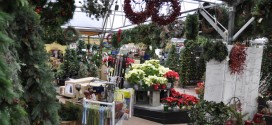While we’ve all learned the best practices of merchandising at one time or another, it’s likely we let some of it slide when business gets busy. The start of a new year is a good time to reestablish those good merchandising habits that will take us into the busy spring and summer selling seasons. Good merchandising can encourage customers to buy, make them more comfortable shopping and increase the efficiency of your sales space. As you start the new year, here are six questions to ask about your merchandising to see if it’s pulling its weight.
Is the store clean?
Let’s start with the basics. A dirty store with dusty shelves is not going to grow your customer base. Customers may not feel comfortable shopping there and likely not do much browsing, which is when they’ll make those impulse purchases. If you’ve noticed the store was dirty this past year, consider creating a schedule of cleaning tasks with specific employees assigned to each.
Does signage make it easy to shop?
If you want people to find their way to the merchandise, especially in the more remote areas of the store, you need clear, colorful signage. A good strategy will include department and aisle signage, and project lists so customers make sure they didn’t forget anything. Signage also helps customers shop on their own, which means they’re more likely to spend extra time in the store and add more items to their shopping cart.
Are shelves always stocked?
If shelves look half empty, you’re sending a subtle message to customers that they may need to go somewhere else to find what they need. Make sure there are no gaps or spaces on displays where there should be product. Remind employees that they need to alert a manager when product gets low, and not wait until it’s out.
Am I using suggestive selling techniques?
Merchandising is part art, part science. Customers need to be able to find those products they came to buy, but good merchandising will also entice them to buy more. Have you used endcaps, dump bins, pallet displays, counter displays and clip strips effectively this past year? According to NRHA’s 2017 Cost of Doing Business Study, the average transaction size last year for a typical hardware store was $22. If you’d like to improve your own number, use those merchandising techniques as a place to start.
Are my displays creative?
Don’t discount the value of a little fun and creativity in your merchandising. Creative displays will catch shoppers’ attention. One option is a how-to display that shows how to do a particular project. This will offer the step-by-step information customers need. This will give them more confidence and make them more likely to try the project on their own. A how-to display is also a good learning tool for employees.
Am I encouraging an upsell?
Standard merchandising practices use a good-better-best arrangement of product, with the best choice within easy reach of the shopper. The space between belt and eye level is where you want to place those most profitable items. Also make sure employees have been trained in how to explain the differences between the different grades of product. It’s a good idea to at least suggest the best grade of product when helping customers so they know their options.
 Hardware Retailing The Industry's Source for Insights and Information
Hardware Retailing The Industry's Source for Insights and Information







